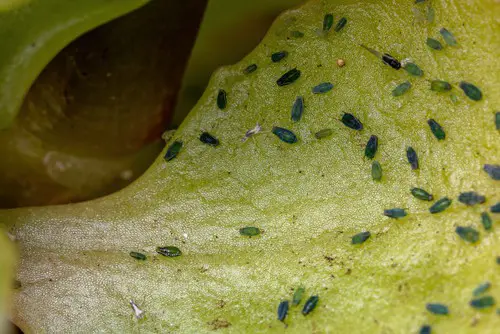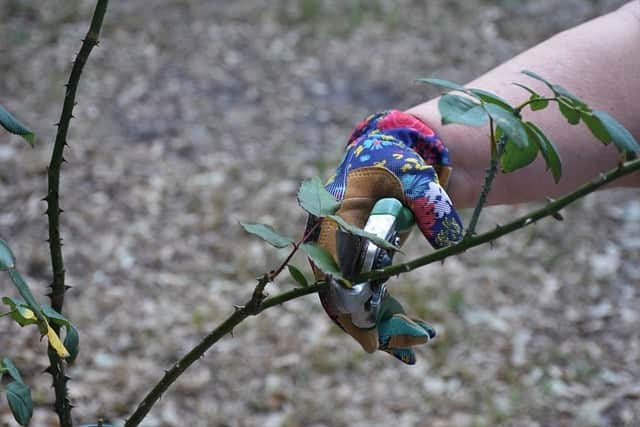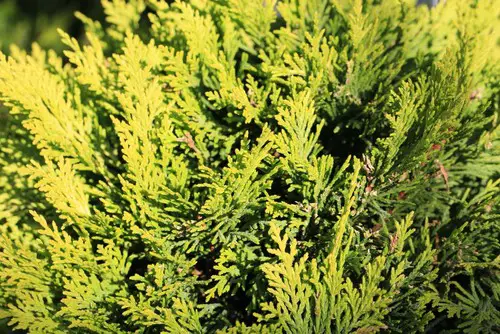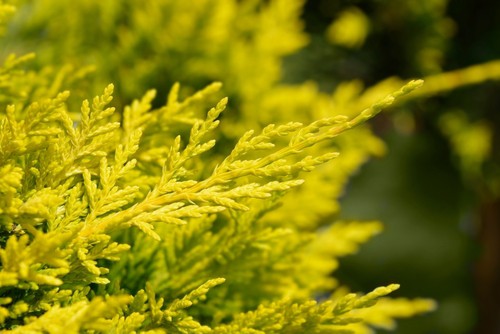Leyland cypress is a popular evergreen tree that is commonly used as a landscape feature. However, it is not uncommon for leyland cypress turning brown inside.
Browning of the Leyland cypress can be caused by a variety of factors, including pests, diseases, and environmental stressors. Understanding the underlying causes of browning is critical to maintaining healthy trees and preserving their aesthetic appeal.
Identifying browning in Leyland cypress is the first step in addressing the issue. Browning can occur on the tips, edges, or entire branches of the tree. In some cases, the browning may be limited to the interior of the tree, making it difficult to detect until it has progressed significantly.
Once browning is identified, it is important to determine the underlying cause to implement the appropriate treatment and prevention strategies.
Key Takeaways:
- Leyland cypress trees can turn brown from the inside out due to a variety of factors.
- Identifying the cause of browning is critical to maintaining healthy trees.
- Treatment and prevention strategies should be tailored to the specific cause of browning.
More on this category:
Identifying Browning in Leyland Cypress
Leyland cypress trees are popular evergreens that are commonly used as hedges, screens, and windbreaks. However, they are susceptible to browning, which can be caused by a variety of factors. In this section, we will discuss how to identify browning in Leyland cypress and the possible causes.
1. Signs of Browning
Browning in Leyland cypress can manifest in different ways, including:
- Brown needles or leaves
- Browning from the inside out
- Browning on the tips or edges of needles or leaves
- Browning on one side of the tree
2. Disease or Pest Induced Browning
Fungal diseases and pests are common causes of browning in Leyland cypress. Fungal infections can cause brown or black spots on the needles or leaves, while pests such as spider mites and bagworms can cause the needles or leaves to turn brown and fall off.
3. Environmental Causes of Browning

Environmental factors such as drought, extreme temperatures, and poor soil conditions can also cause Leyland cypress to turn brown.
Drought stress can cause the needles or leaves to dry out and turn brown, while extreme temperatures can cause the foliage to scorch. Poor soil conditions, such as soil compaction or nutrient deficiencies, can also lead to browning.
It is essential to identify the cause of browning in Leyland cypress to determine the appropriate treatment. Regular inspection and maintenance can help prevent browning and keep Leyland cypress trees healthy.
Common Diseases Affecting Leyland Cypress
Leyland cypress is an evergreen tree that is widely used for landscaping purposes. However, it is not immune to diseases that can cause it to turn brown inside. Some of the common diseases that affect Leyland cypress are canker diseases, needle blight, and Seiridium canker.
1. Canker Diseases
Canker diseases are fungal infections that can cause dieback and rot in Leyland cypress trees. The most common canker diseases affecting Leyland cypress are Cercospora canker, Botryosphaeria canker, and Phomopsis canker. These diseases can cause the bark to crack, and the tree to turn brown inside.
The infected branches should be pruned immediately, and fungicides should be applied to prevent further spread of the disease.
2. Needle Blight
Needle blight is a fungal disease that affects the needles of Leyland cypress trees. The disease is caused by several fungi, including Seiridium cardinale and Lophodermium seditiosum.
The needles turn brown and fall off, leaving the tree bare. The disease can be prevented by keeping the tree healthy and applying fungicides during the growing season.
3. Seiridium Canker
Seiridium canker is a fungal disease that affects Leyland cypress trees. It is caused by the fungus Seiridium unicorne. The disease causes the needles to turn brown and the branches to die back.
The fungus can enter the tree through wounds or natural openings, such as leaf scars. The disease can be prevented by keeping the tree healthy and applying fungicides during the growing season.
Pests Threatening Leyland Cypress

Leyland cypress trees are susceptible to a variety of pests that can cause damage to the tree, including turning the needles brown. Here are a few of the most common pests that threaten Leyland cypress trees:
Bagworm Infestations
Bagworms are a type of moth larvae that can cause significant damage to Leyland cypress trees. The larvae create bag-like structures made of silk and bits of foliage, which they attach to the branches of the tree. As the larvae grow, they consume more and more foliage, causing the branches to turn brown and die.
If you notice bagworms on your Leyland cypress tree, it’s important to remove them as soon as possible. You can physically remove the bags by hand or use an insecticide to kill the larvae. Be sure to follow the instructions on the insecticide carefully and wear protective clothing to prevent exposure to the chemicals.
Spruce Spider Mites
Spruce spider mites are tiny insects that can cause significant damage to Leyland cypress trees. They are typically found on the undersides of the needles and can be identified by the webbing they produce. As they feed on the needle sap, they cause the needles to turn brown and fall off.
To control spruce spider mites, you can use an insecticidal soap or oil spray. Be sure to cover the entire tree, including the undersides of the needles, to ensure that all of the mites are killed. You may need to repeat the treatment several times to completely eliminate the infestation.
By being aware of the pests that threaten Leyland cypress trees and taking steps to prevent and control infestations, you can help keep your trees healthy and vibrant for years to come.
The Impact of Environmental Factors
Leyland Cypress trees are susceptible to environmental factors that can cause them to turn brown from the inside out. These factors include drought stress and winter damage. Understanding how these factors impact Leyland Cypress trees can help gardeners take preventative measures to keep their trees healthy.
Drought Stress
Leyland Cypress trees are native to coastal regions, which means they require a lot of water to thrive. When the trees are not getting enough water, they can become stressed and turn brown from the inside out. Drought stress can cause the needles to dry out and fall off, leaving the tree looking sparse and unhealthy.
To prevent drought stress, it is important to water Leyland Cypress trees regularly. During dry spells, gardeners should water the trees deeply and frequently to ensure they are getting enough water. Mulching around the base of the tree can also help retain moisture in the soil.
Winter Damage
Winter damage is another environmental factor that can cause Leyland Cypress trees to turn brown from the inside out. Freezing temperatures can damage the needles and branches of the tree, causing them to turn brown and die.
To prevent winter damage, gardeners should make sure their Leyland Cypress trees are healthy and well-maintained before the winter months. Pruning dead or damaged branches can help prevent them from breaking off during a winter storm. Wrapping the tree in burlap can also help protect it from freezing temperatures.
Maintaining Healthy Leyland Cypress

Leyland Cypress trees are evergreens that can grow up to 60 feet tall, and they are often used as privacy screens or windbreaks. However, they are susceptible to browning, which can be caused by several factors, including improper pruning and nutrient deficiencies.
In this section, we will discuss some tips for maintaining healthy Leyland Cypress trees.
Proper Pruning Techniques
Pruning is essential for maintaining the health and appearance of Leyland Cypress trees. However, improper pruning can cause damage and stress, which can lead to browning. Here are some tips for proper pruning:
- Prune Leyland Cypress trees in late winter or early spring before new growth appears.
- Use sharp, clean pruning shears to make clean cuts.
- Avoid pruning more than one-third of the tree’s foliage in a single season.
- Remove dead or diseased branches as soon as possible.
- Do not prune Leyland Cypress trees during hot, dry weather.
Nutrient Management
Leyland Cypress trees require proper nutrient management to maintain healthy growth and avoid browning. Here are some tips for nutrient management:
- Test the soil before planting Leyland Cypress trees to determine nutrient deficiencies.
- Fertilize Leyland Cypress trees in the spring with a slow-release fertilizer.
- Apply a layer of organic mulch around the base of the tree to retain moisture and add nutrients to the soil.
- Water Leyland Cypress trees deeply and regularly during the growing season to prevent drought stress.
By following these proper pruning techniques and nutrient management tips, you can help maintain healthy Leyland Cypress trees and prevent browning. Remember to prune at the right time and avoid over-pruning, and ensure that your trees are receiving the proper nutrients and water they need to thrive.
Treatment and Prevention Strategies
1. Using Fungicides
Fungicides are effective in treating fungal infections that cause Leyland cypress trees to turn brown. These chemicals can be applied to the foliage or soil to prevent the spread of the infection. It is best to apply fungicides in the early stages of the infection to prevent it from spreading to other parts of the tree.
It is important to choose the right fungicide for the specific type of fungal infection affecting the tree. Consult with a professional arborist or horticulturist to determine the appropriate fungicide for the specific case.
2. Managing Infected Branches
Infected branches should be pruned immediately to prevent the spread of the infection. Cut the branches at least 6 inches below the infected area, making sure to sterilize the pruning tools before and after use. Dispose of the infected branches properly to prevent the spread of the infection to other trees.
If the infection has spread to the main trunk or water-conducting tissue, it may be necessary to remove the entire tree. This is especially true if the bark is dark brown and shows signs of decay.
3. Other Prevention Strategies

Preventing Leyland cypress trees from turning brown involves proper tree care and management. Ensuring the tree gets adequate water, especially during dry periods, is crucial. Regular pruning can help maintain the health of the tree and prevent the spread of diseases. Proper site selection is also important.
It is also recommended to avoid planting Leyland cypress trees in areas with poor drainage or where water tends to accumulate. This can lead to root rot and other fungal infections that can cause the tree to turn brown inside.
By following these treatment and prevention strategies, homeowners can keep their Leyland cypress trees healthy and prevent them from turning brown inside.
Leyland Cypress as a Landscape Feature
Leyland Cypress (Cupressus × leylandii) is a popular evergreen tree that is widely used as a landscape feature. It is known for its fast-growing nature, hardiness, and ability to withstand harsh weather conditions. Leyland Cypress is often used as a windbreak or privacy fencing due to its dense foliage and tall stature.
1. As a Windbreak
Leyland Cypress is an excellent choice for a windbreak due to its ability to withstand strong winds. It can grow up to 60 feet in height and 15-25 feet in width, providing a natural barrier against strong winds. It is also a great option for coastal areas where strong winds are common.
2. As Privacy Fencing
Leyland Cypress is also a popular choice for privacy fencing due to its dense foliage and tall stature. It can grow up to 60 feet in height, providing a natural barrier against prying eyes. It is often used to create a natural privacy screen around a property or to block out unwanted views.
Leyland Cypress is also a great option for noise reduction as its dense foliage can help absorb sound waves. This makes it a popular choice for homes located near busy roads or highways.
3. Hardy
Leyland Cypress is a hardy tree that can tolerate a wide range of soil types and weather conditions. It is drought-tolerant, making it a great option for areas with low rainfall. It is also resistant to many common pests and diseases, making it a low-maintenance option for homeowners.
Frequently Asked Questions

How to save a dying Leyland cypress tree?
Saving a dying Leyland cypress tree requires identifying the underlying cause of the problem. If the tree is suffering from a fungal infection, it is important to remove the infected parts and treat the tree with a fungicide.
If the tree is suffering from root rot, it is important to improve drainage and avoid overwatering. In some cases, it may be necessary to remove the tree entirely to prevent the spread of disease.
How to tell if Leyland cypress is dying?
Signs that a Leyland cypress tree is dying include browning or yellowing needles, loss of needles, and a general lack of vigor. If the tree is turning brown from the inside out, it may be suffering from a fungal infection or root rot.
If the tree is turning brown at the bottom, it may be suffering from overwatering or poor drainage.
Leyland cypress browning from inside out?
Leyland cypress trees that are turning brown from the inside out may be suffering from a fungal infection or root rot. Fungal infections can be treated with a fungicide, while root rot can be prevented by improving drainage and avoiding overwatering.
Leyland cypress turning brown in winter?
It is normal for Leyland cypress trees to turn brown in winter, as they are a deciduous tree. However, if the tree is turning brown from the inside out, it may be suffering from a fungal infection or root rot.
Leyland cypress turning brown at bottom?
Leyland cypress trees that are turning brown at the bottom may be suffering from overwatering or poor drainage. Improving drainage and avoiding overwatering can help prevent this problem.
What are the signs of root rot in Leyland cypress?
Signs of root rot in Leyland cypress trees include yellowing needles, loss of needles, and a general lack of vigor. The roots may also appear brown and mushy. Improving drainage and avoiding overwatering can help prevent root rot in Leyland cypress trees.

Hey, I’m Lisa and I’ve been an avid gardener for over 30 years. I love writing, talking and living in the garden! Feel free to connect with me on my socials below


